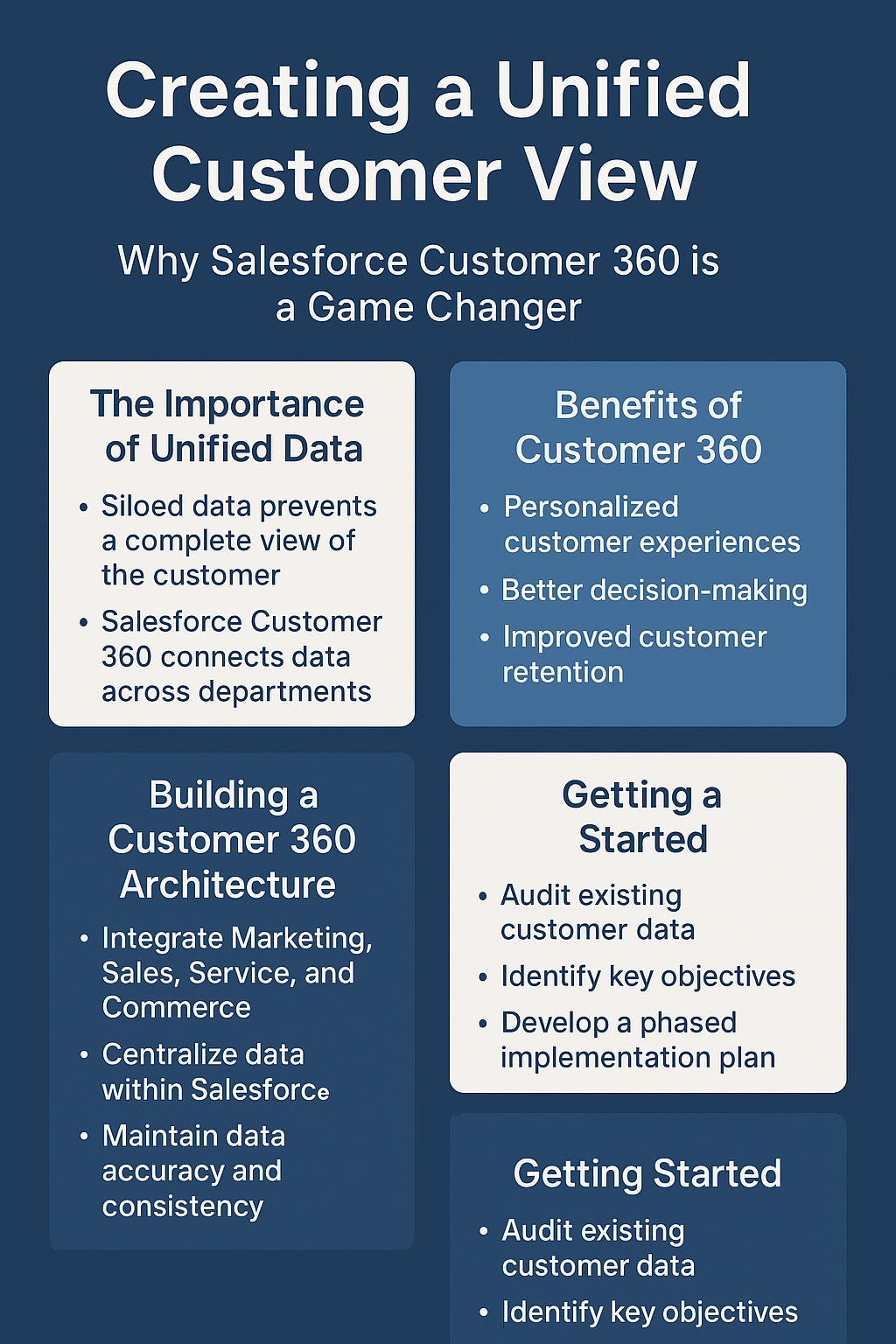Creating a Unified Customer View: Why Salesforce Customer 360 is a Game Changer
In today’s hyperconnected world, understanding your customer holistically is no longer a luxury—it’s a necessity. Salesforce Customer 360 offers a powerful approach to breaking down data silos and delivering a complete view of your customers across every interaction, department, and channel. In this article, we explore what Customer 360 is, why it matters, and how businesses can leverage it to build loyalty, drive revenue, and deliver exceptional experiences.
What Is Salesforce Customer 360?
Salesforce Customer 360 is a set of integrated services that unify customer data across all Salesforce apps (Sales, Service, Marketing, Commerce) and external systems. The result? A single, comprehensive profile that reflects every engagement your company has had with a customer.
With Customer 360, companies can:
- Connect data from various sources (CRM, ERP, marketing tools, etc.)
- Create a unified ID to track the same customer across systems
- Personalize interactions based on historical behavior and preferences
Why a 360-Degree Customer View Matters
- Eliminate Data Silos
Disconnected tools create fragmented customer profiles. Customer 360 centralizes information, ensuring teams access the same, up-to-date insights. - Deliver Personalized Experiences
With a unified customer profile, marketing and sales teams can craft personalized messages, offers, and service interactions that reflect the customer’s actual journey. - Improve Cross-Department Collaboration
Sales, service, and marketing teams often operate in silos. Customer 360 enables shared visibility, helping teams coordinate outreach and support efficiently. - Boost Customer Loyalty and Retention
When customers feel known and understood, they stay longer. Accurate, connected data makes this possible at scale.
Key Components of Salesforce Customer 360
- Sales Cloud, Service Cloud, Marketing Cloud: Core apps that fuel engagement across touchpoints.
- Customer Data Platform (CDP): Unifies structured and unstructured data to create detailed customer profiles.
- MuleSoft & APIs: Connect Salesforce with third-party apps, ERPs, and data lakes.
- Identity Resolution: Assigns unique IDs to customers for better data matching and consolidation.
Steps to Build a Customer 360 Strategy
- Audit Your Data Sources
Identify where your customer data lives—Salesforce, spreadsheets, legacy systems, ecommerce platforms, etc. - Integrate Systems with MuleSoft or Native Tools
Ensure all relevant tools and platforms are connected and synced. - Clean and Standardize Your Data
Eliminate duplicates, ensure consistency, and validate key attributes. - Establish a Single Customer ID
Use Salesforce Identity or CDP to tie data to a unique profile. - Define Use Cases for Personalization and Engagement
Focus on high-impact areas—cross-sell campaigns, service routing, churn prevention. - Monitor, Refine, and Scale
Continuously improve data quality and adapt your use of Customer 360 based on business needs and user feedback.
Real-World Example
A retail company integrated ecommerce transactions, customer support history, and marketing email engagement into a unified profile using Salesforce Customer 360. As a result, they increased personalized product recommendations and reduced customer churn by 28% in one year.
Final Thoughts
Salesforce Customer 360 is more than a technology—it’s a business strategy centered around the customer. By bringing together data, people, and processes, Customer 360 empowers organizations to create seamless, personalized experiences that build long-term relationships.
Embrace the 360-degree view to understand your customers deeply, serve them intelligently, and grow your business exponentially.
